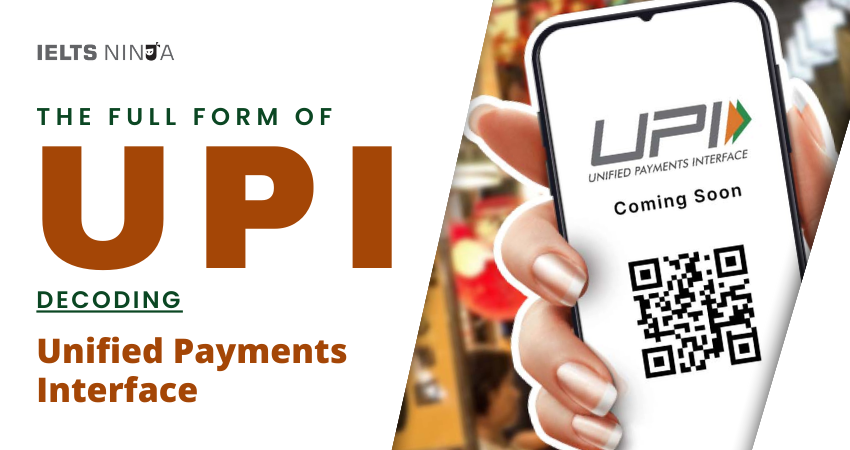The full form of UPI के लिए खड़ा है “Unified Payments Interface”, and it is a real-time payment system developed by the National Payments Corporation of India (NPCI). UPI facilitates interbank transactions by instantly transferring funds between two bank accounts on a mobile platform. It has revolutionized digital payments in India, making them more convenient and accessible.
Key Details about UPI (Unified Payments Interface):
Here are key details about UPI:
उद्देश्य:
UPI was introduced to simplify and enhance digital payments in India. Its primary goal is to promote a cashless economy by providing a seamless and secure way for individuals and businesses to make payments.
Mobile-Centric:
- UPI is a mobile-centric payment system, which means users can perform transactions through a smartphone app or a mobile banking platform.
- This mobile-centric approach has contributed to the widespread adoption of UPI in India, where smartphones are prevalent.
Real-Time Transactions:
One of the key features of UPI is the ability to make real-time transactions 24/7. Users can send and receive money instantly, making it convenient for various purposes, including peer-to-peer transfers, bill payments, and online shopping.
Interoperability:
UPI is designed to be interoperable, allowing users to link multiple bank accounts to a single UPI ID or virtual payment address (VPA). This eliminates the need to use different apps for different banks.
सुरक्षा:
- UPI transactions are highly secure and use multiple layers of security, including two-factor authentication (2FA) and encryption.
- Users need to create a UPI PIN to authorize transactions, adding an extra layer of security.
Registration:
- To use UPI, individuals need to register their bank accounts with a UPI-enabled app provided by their bank or a third-party app.
- During registration, users create a unique virtual payment address (VPA) that acts as an identifier for receiving funds.
Transaction Types:
- UPI supports various types of transactions, including person-to-person (P2P) transfers, person-to-merchant (P2M) payments, bill payments, recharges, and more.
- Users can also check their account balance and view transaction history through the UPI app.
यह भी पढ़ें: सर्वश्रेष्ठ ऑनलाइन आईईएलटीएस कोचिंग एवं प्रशिक्षण अकादमी
UPI – Bharat Interface for Money (BHIM):
BHIM is a UPI-based mobile app developed by NPCI that offers a simple and user-friendly interface for conducting UPI transactions. It has gained popularity for its ease of use.
Government Initiatives – UPI:
UPI has been integrated into several government initiatives, including Digital India and the Jan Dhan Yojana, to promote financial inclusion and digital literacy.
Growth and Adoption of UPI:
Since its launch, UPI has witnessed significant growth in transaction volume and value. It has become one of the most widely used digital payment methods in India, surpassing other modes of payment.
निष्कर्ष:
UPI (Unified Payments Interface) has transformed the way people in India make digital payments. Its user-friendly and secure platform has made it a preferred choice for individuals, businesses, and government initiatives. UPI’s continued growth and innovation in the digital payments space reflect its significant impact on the Indian economy and financial landscape.








